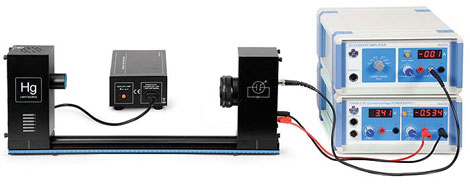This Christmas we may have to dig a little deeper for something to inspire us



This usually works out well. (Later when I get more confident and wing it, disaster follows.) For similar reasons, I am very careful about following the experimental instructions when doing practical work with a customer for Pert. Generally, I am rather poor at all practical tasks, so I carefully read and rigorously follow every instruction, and am especially careful with the quantities and measurements.
You can imagine my concern, therefore, as I was setting up a photoelectric effect practical in the UNISA Physics Labs, when the instruction stated rather vaguely: “Place the light source and plate somewhere around 30 centimetres apart.” Why not specify the exact distance? After all, the quantity I was trying to experimentally determine was Planck’s constant, which is (as everyone knows!) 6.62607004 × 10-34 m2 kg/s. How big is that? Not very. You need to move the comma back 34 times. That means there are 33 zeros before the first value. It is hard to imagine how small that is, which is why I was so surprised and concerned that PASCO was so haphazard with their setup instructions.
So, with all the UNISA lab assistants gathering round expectantly, I puzzled over this until I finally realised that I was about to have my first hands-on experience of the crazy and wonderful world of quantum mechanics. You see, contrary to what you might expect, the amount of light is actually irrelevant. In fact the main point of the whole experiment is that the intensity of the light falling on your receiver makes no difference. It is all about the frequency of that light. No matter at what distance you place your light source, you should still get a good value for Planck’s constant. And we did: only a few percent shy of the accepted value. It was literally amazing and not so hard, after all. Just five or six measurements of voltage and frequency.
And this got me thinking: this is an extremely clever experimental design. That it is possible to contrive an experiment to measure such a ridiculously small value, one that even clumsy experimenters like myself can calculate in a single lab period, well, that is some seriously clever thinking. And the UNISA lab is filled with material like this – you can measure the charge to mass of an electron just by measuring the radius of a beam and its associated voltage. And you can measure microscopic diffraction spacing just from the length to a view screen and the distance between the dots of light projected there. These are invisible, almost unfathomable, quantities. But because of experimental ingenuity, anyone can quite easily work them out. (If I can do it, believe me, you can too!)
Of course centuries of science went into making this easy, which is both humbling and inspiring. So I do wish in this Christmas period that you also get to encounter extraordinary achievements in some way. It is easy to get discouraged just by opening a newspaper. To be uplifted you sometimes have to dig a little deeper. Sometimes right down to the tiniest quantities that you can imagine.
- A very South African skills conference05 Dec 13:19
- Progress in technology has slowed down a lot12 Apr 14:31
- ChatGPT failed a job interview, but I can still put it to work05 Mar 13:13
- How do you make something interesting?07 Jul 14:50
- Business and government - who does it better?14 Nov 10:36












